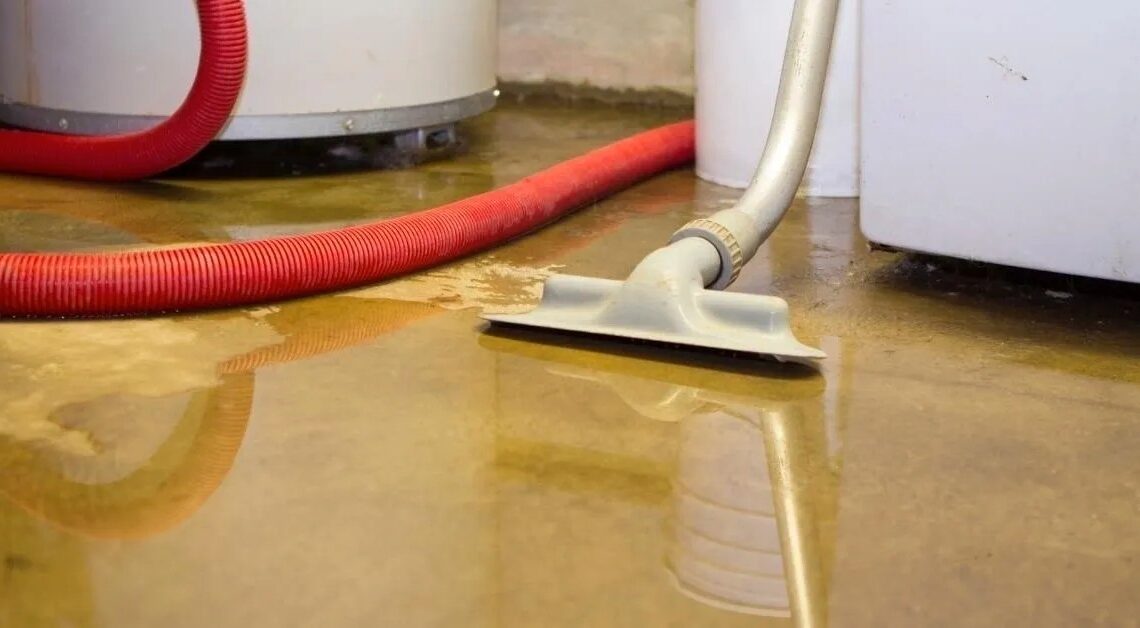
Sewage Backup: Health Risks and Proper Cleanup Procedures
September 30, 2023Are you aware of the health risks associated with sewage backup? It’s crucial to understand the importance of proper cleanup procedures. In this article, we will guide you through the common health risks and steps for safe and effective sewage backup cleanup. By following these procedures, you can prevent future incidents and ensure the safety of your environment.
The Dangers of Sewage Backup
You need to be aware of the health risks associated with sewage backup. When sewage overflows and enters your home, it brings along harmful bacteria, viruses, and parasites. These pathogens can cause serious health problems if you come into contact with them.
Exposure to sewage can lead to gastrointestinal issues such as diarrhea, vomiting, and stomach cramps. It can also cause respiratory problems like coughing, wheezing, and difficulty breathing.
In addition, sewage backup increases the risk of skin infections and can even lead to more severe illnesses such as hepatitis A and E. It’s important to take immediate action if you experience sewage backup, as prolonged exposure can have long-lasting health effects.
Always prioritize your safety and seek professional help to properly clean and disinfect the affected area.
Common Health Risks Associated With Sewage Contamination
Exposure to sewage contamination can lead to various health issues, such as gastrointestinal problems and respiratory infections. When you come into contact with sewage-contaminated water, the harmful bacteria and viruses present can enter your body through your mouth, nose, or open wounds. This can result in severe gastrointestinal problems like diarrhea, vomiting, and stomach cramps.
Additionally, breathing in airborne contaminants from sewage can lead to respiratory infections, including bronchitis and pneumonia. These health risks can be particularly dangerous for individuals with weakened immune systems, such as children, the elderly, and those with pre-existing medical conditions.
It’s crucial to take immediate action to clean up and sanitize areas affected by sewage backup to minimize these health risks and protect yourself and your loved ones.
Understanding the Importance of Proper Cleanup Procedures
Understanding the importance of following proper procedures when cleaning up after a sewage incident is crucial for minimizing potential risks and ensuring a safe environment. When faced with a sewage backup, it’s essential to take immediate action to prevent further contamination and protect your health. First, make sure to wear personal protective equipment such as gloves, goggles, and boots to avoid direct contact with the sewage.
Next, shut off the water supply and electricity to prevent any further damage.
Then, carefully remove any standing water using a wet vacuum or mop, making sure not to spread the sewage to unaffected areas. Dispose of all contaminated materials properly, following local regulations. Finally, thoroughly clean and disinfect the affected area using appropriate cleaning agents to eliminate any harmful bacteria or viruses.
Steps for Safe and Effective Sewage Backup Cleanup
To ensure a safe and effective cleanup after a sewage backup incident, it’s important to take immediate action and follow the necessary steps.
First, make sure to wear protective gear, such as gloves and boots, to prevent direct contact with the contaminated water.
Next, turn off the main water supply and electricity to avoid any further damage.
Then, remove any standing water using a wet/dry vacuum or a pump. Afterward, thoroughly clean and disinfect the affected area using a bleach solution or a commercial disinfectant. Don’t forget to properly dispose of any damaged items that can’t be salvaged. Finally, ensure proper ventilation by opening windows and using fans to dry out the area.
Preventing Future Sewage Backup Incidents
To prevent future incidents, it’s important to regularly inspect and maintain your plumbing system. By taking these proactive steps, you can avoid the inconvenience and potential health risks associated with sewage backup.
Start by checking your plumbing fixtures and pipes for any signs of leaks or blockages. Make sure to clean out your drains regularly and avoid flushing anything other than toilet paper down the toilet.
Additionally, consider installing a backflow prevention device to prevent sewage from flowing back into your home. It’s also crucial to have your septic tank pumped and inspected on a regular basis.
Frequently Asked Questions
Can I Use Regular Household Cleaning Products to Clean up Sewage Backup?
You shouldn’t use regular household cleaning products to clean up sewage backup. It’s important to use proper disinfectants and follow the recommended cleanup procedures to ensure your health and safety.
How Long Does It Take for the Health Risks Associated With Sewage Contamination to Appear?
It can take anywhere from a few hours to a couple of days for the health risks of sewage contamination to appear. It’s important to be aware of any symptoms and seek medical attention if necessary.
What Should I Do if I Accidentally Come Into Contact With Sewage Backup?
If you accidentally come into contact with sewage backup, it’s important to take immediate action. Cleanse the affected area thoroughly with soap and water, and seek medical attention if you experience any symptoms of illness.
Are There Any Long-Term Health Effects From Being Exposed to Sewage Backup?
Exposure to sewage backup can lead to long-term health effects. It’s important to be aware of the risks and take proper precautions to minimize the potential harm to your health.
What Are the Most Common Causes of Sewage Backup Incidents?
The most common causes of sewage backup incidents include:
– Clogged pipes
– Tree roots infiltrating the sewer line
– Heavy rainfall overwhelming the system
– Structural defects in the sewer system.







